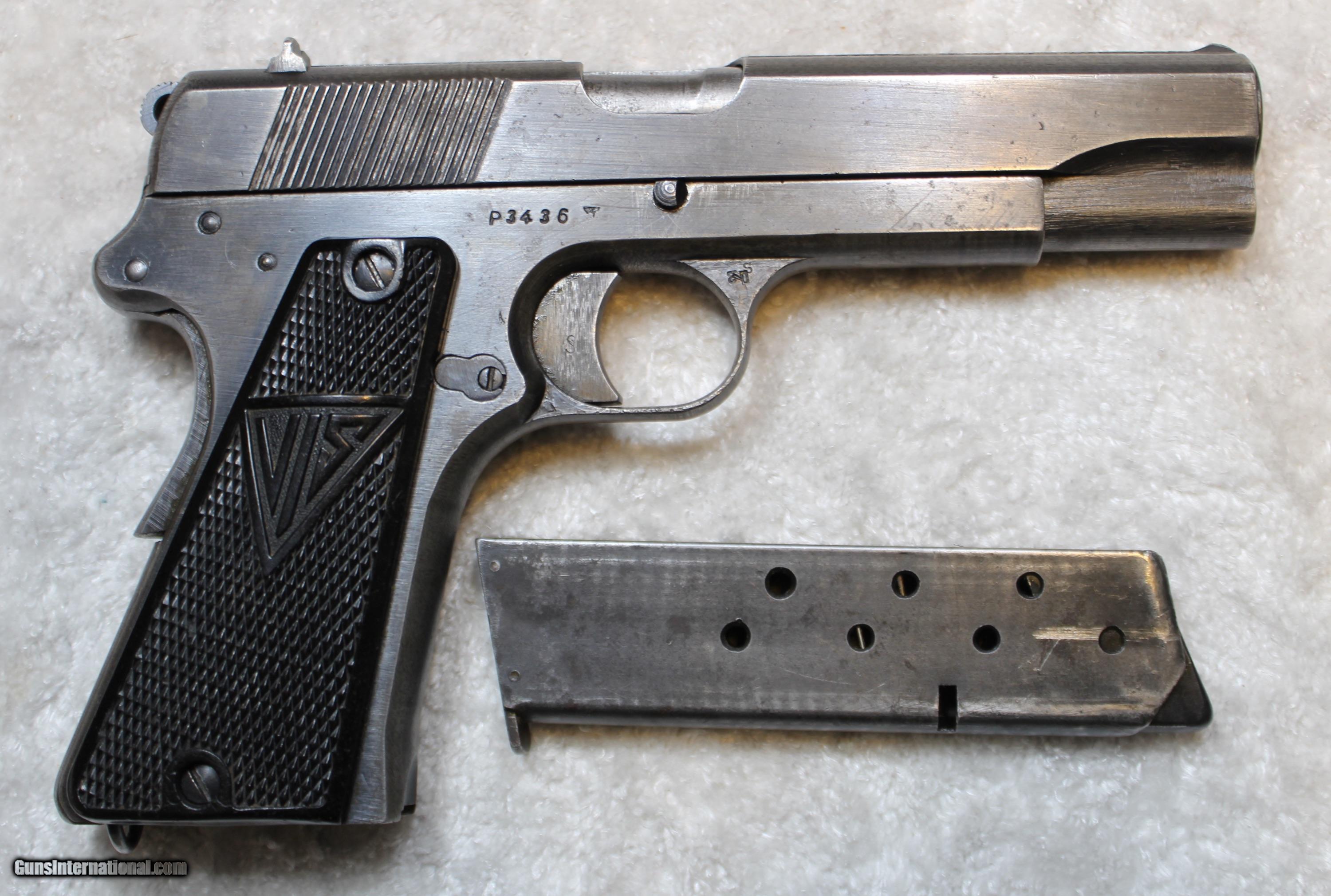
The Radom VIS is set for a 50-pistol run this year in Poland and could see wider commercial manufacture. Just 50 guns will be made, serial numbered 201801 to 201850. Radom Pistols are semi automatic pistols are WW2 Era Handguns that were made by both the Polish and the German. This handgun was normally manufactured by the Polish, and these models will have an engraving of the Polish Eagle. During the war, the Nazi Army took over the F.B. Radom factory and manufactured them for their troops.
Vis Radom Pistol Serial Numbers Location


The first pistols, made before the German takeover, were marked on the left side of the slide with a fairly large Polish eagle. On either side of the eagle are two line markings - F.B.Radom over the date on the left side, and 'VIS-wz 35' over a patent number on the right side. The wartime galleries illustrate every serial number letter code prefix while showing first hand the deterioration of quality and production simplifications instilled as the war progressed. Other sections include pistols of the Polish Underground, non-VIS pistol models and even rifles made at Radom. When the Germans took the FB factory, what I understood is that they started with alpha-numeric serial numbers. What you are saying sounds right and makes a lot of sense. I read some where that the first group of Germen occupation P35 (with decocker, take-down latch and shoulder stock slot, slide markings: “F.B.
- Joined
- Apr 13, 2009
- Messages
- 2,171
- Likes
- 350
- Location
- Western Maine


Vis Radom Pistol Serial Numbers For Sale
Largely considered as one of the best engineered pistols of the European WWII era, the VIS 35 was Poland's ultimate small arms achievement. Though it is uniquely patented, the pistol's design borrows heavily from the Belgian Browning Hi Power. Pre-war production (1936-1939) featured a prominent Polish Eagle on the left slide, and the guns were meticulously buffed and finished.
When the Germans overran Poland in late 1939, they resumed production at the Radom Arsenal utilizing existing inventory. By mid to late 1940, they began making new product. The Polish Eagle was discontinued, and the Germans renamed the gun as the P35(p). Early occupation production had the new designation stamped on the slide, and the pistol retained its features such as the quality finish, the shoulder stock slot in the rear grip frame, and the takedown lever. Serial numbering was changed to the typical German alphabet prefix style. The Nazis assigned the Waffenamt inspection of WaA77 (later Eagle over 77). Final assembly and acceptance was assigned to the Steyr Arsenal in Austria, with Waffenamt WaA623. Magazines featured the inspection of E/189.
As the war progressed, the Germans sought to speed production and cut costs. The stock slot was discontinued. The takedown lever was eliminated, and instead incorporated with the decocking device. The P35(p) was discontinued on the slide, the relief recesses were no longer milled behind the trigger on the frame, grip screw pillar escutcheons were eliminated, telescoping guide rod replaced with a solid rod, and the plastic grip panels were replaced with wood. Outward appearance was no longer a concern, and the polished finish yielded to the rough machined finish. The latest guns were parkerized instead of blued.
For identification purposes of war-time pistols, some collectors will follow a system of Grades I-IV to denote the feature elimination progression. Others identify by the First Alphabet and Second Alphabet serial number series. And still others call them Slotted and Non-Slotted, or Three Lever and Two Lever.
By mid to late 1944, the Soviets were advancing toward Poland, and the Germans began moving the entire VIS 35 production from the Radom Arsenal in Poland to the Steyr Arsenal in Austria.
Can't really say that I absorb all the Grade Types and Sub-variants, so I'll call mine a two lever, d-prefix from the second alphabet, no stock slot, non P35(p) legend, E/77 slide and frame, WaA623 slide, telescoping guide rod, E/189 mag, and nice black plastic grips without screw pillars.
It is an early 1944 gun and has some light high edge wear, a small rub on the right slide, a light scratch or two, and some moderate grip strap thinning. Bore is bright and sharp.
Although the lighting and exposure don't always pick up proper hue in the pics, it's a very nice dark blue with 90-plus% coverage. Machining is crude and rough, just like it should be, and just the way I like it!
My holster is extremely interesting. It began life as M1898 Austrian Rast Gasser revolver holster. It was likely modified in WWI to incorporate a shoulder harness. In WWII, the shoulder harness was eliminated, and the large trigger guard section was reduced to accept the smaller frame of the VIS 35.
This is a very uncommonly found holster design, and I have only found reference to three others with similar alterations.
The rest of the pics, and thanks for looking.
-Matt